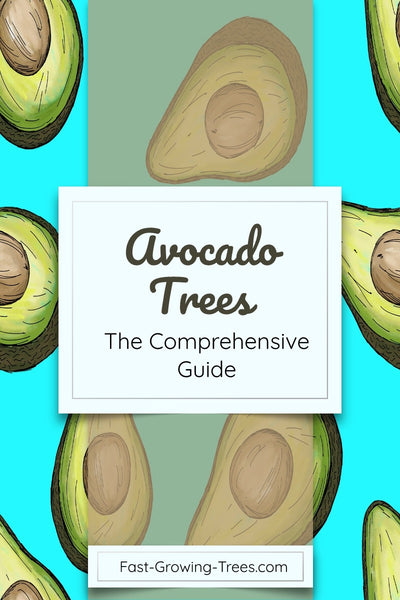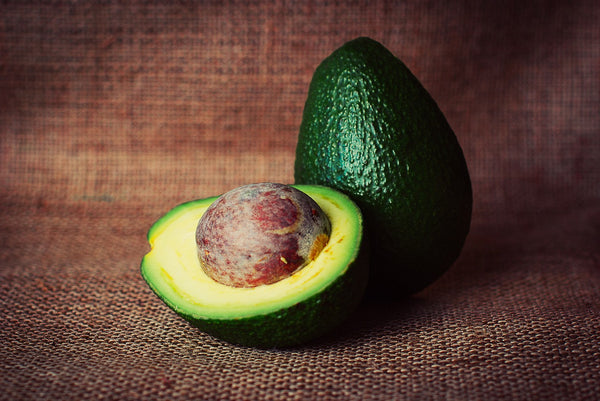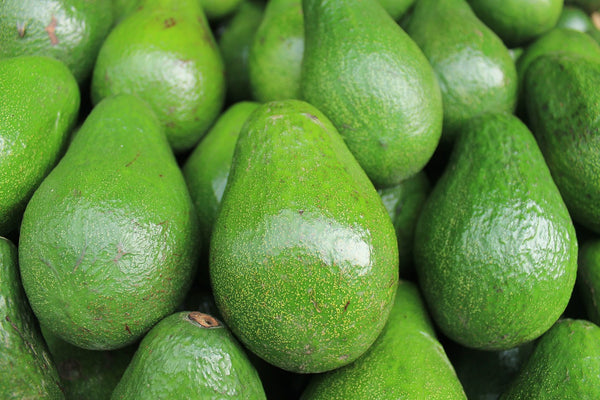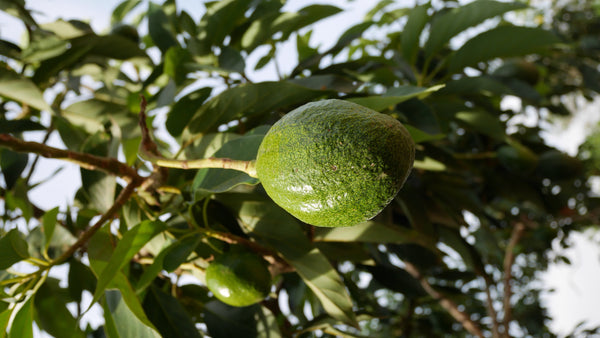One of the most popular superfoods on the market, the Avocado delivers a tonof vitamins and filling, satisfying fiber. And although you can get this tropical fruit from the store, there’s nothing better than harvesting your own avocados, right from home. With our Avocado Trees, it’s possible.
Don’t be daunted – Avocado Trees are actually easy to plant. With a bit of planning and our care tips and tricks, you’ll have an array of avocados to call your own in no time. Let us lead the way and make your journey to backyard harvesting that much more effortless.

Avocado Trees: Why Buy?
As we mentioned before, Avocado Trees are a must-have. Why? Well, their oft-mentioned and talked-about fruit is asuperfood, meaning it’s packed with nutrients that are super healthy. Offering nearly 20 vitamins and minerals in each serving, including lutein, potassium and folate, avocados are a powerful little fruit.
Vitamins, Vitamins, Vitamins
Good Fats + Heart Health
And though avocados are high in fat, they’restillhealthy. Avocados have what’s calledmonounsaturated fat, which is a “good” fat that aids in lowering bad cholesterol.Avocados help lower low-density lipoprotein (LDL) cholesterol, also known as “bad” cholesterol, while raising high-density lipoprotein (HDL) cholesterol, or good cholesterol. This is a big benefit for your heart.
Tasty Treats
Ok, so they’re healthy. But that’s not all. From avocado toast to from-scratch guac, they pretty much improve any dish or meal. Dress them up and grab some nachos, or simply sprinkle with pepper and eat them right off the skin. Either way, avocados are absolutely delectable. They’re on your favorite sushi, in your morning breakfast bowls, in cooking oils and more.

Planning
Plus, there’s even more to love when it comes to avocados. One of the many perks of Avocado Trees is that they can be planted in a container or in the ground. If you’re container planting, just make sure that you place your Avocado Tree in an area that gets a minimum of 4 to 6 hours worth of sunlight each day. Place your tree in front of a large window with direct afternoon sunlight for best results.
And if you’re ground planting, choose an area on the Southern side of your home and ensure that area has well-drained soil. It’s also no problem if your soil needs work. Simply amend the soil with sand or other gritty matter to soak up any left-behind moisture. As long as youplantyour Avocado Tree (or Avocado Trees!) in an area that receives amplesunlight daily, you should see them thrive.
Planting
So you’ve scouted your chosen area, whether it’s indoors or out, and have your Avocado Trees on hand. Luckily, once you’ve got everything planned out, it’s easy to plant your trees.
Indoor Planting
To start, take your trees out of their shipped nursery containers and plant them in containers that are twice the size of their root balls. This is important to ensure your trees have plenty of room to spread out and get established. Also, ensure the containers you use for planting have drainage holes to keep your plants from catching root rot. And dispose of any standing water in your containers’ saucers to avoid fungal growth on your Avocado Trees.
Outdoor Planting
Keep in mind that if you’re planting multiple trees outdoors, you must leave approximately 5 to 8 feet of space between your trees and other structures. Once you’re ready to plant your Avocado Trees, dig a hole that is two to three times wider and deeper than the shipped container. Your roots will then have adequate space to get established once you’ve planned for proper space.
Care
Planting your Avocado Trees is really that easy. Seriously – there’s not a lot of effort involved when it comes to these exotic cultivars. But proper care after planting does give your trees a head start on a lush life.
Watering
One of the most important factors in keeping your Avocado Trees healthy is a proper watering schedule. Your trees will need frequent, deep waterings once or twice a week. However, you should leave enough time between waterings to let the soil dry out sufficiently. Avocado Trees thrive when they’re watered properly, but not when they’re overwatered!
And while the roots of Avocado Trees prefer to stay on the dry side, their leaves love humidity. Your indoor-plantedAvocado Treeswill do best if they’re misted daily. You can also use a humidifier in the room, or fill your container’s saucer with rocks and add water.

Fertilizer
The instructions for fertilizer are pretty simple. Just avoid fertilizing your tree during its first year, since this can burn the roots and cause other damage.After that first year has passed, feed your tree by using a balanced fertilizer four times yearly. Older Avocado Trees benefit from nitrogenous fertilizer applied during the late winter and early summer.
Pruning
As mentioned above, Avocado Trees are pretty effortless when it comes to care. The only time you’ll need to prune is during late winter or early spring, and that pruning isdone only to remove dead wood. If you want to maintain a certain height for your Avocado Trees, trim them lightly by cutting the tallest branches. If you’d like to maintain your width, trim the longest branches and work your way in by cutting other protruding branches.
Pollination
It’s amazing to see the power of pollination at work, and your mature Avocado Trees may grow millions of green flower clusters during the flowering season after pollination. These clusters have both female and male organs; however, the clusters don’t work at the same time. Although the Hass, Cold Hardy and Day Avocado Trees are allself-fertile(you’ll get fruit with just one plant), more trees are always better for even more fruit!
Pests and Diseases
Deer
When new growth emerges, be mindful of deer, first and foremost. Deer like to nibble on your new tree’s tender shoots, stunting its growth and making it vulnerable to sunburn. However,you can protect your tree by wrapping the bark with trunk wraps. Trunk wraps can also keep smaller critters like opossums, rabbits and squirrels from attacking your tree.
Another alternative? Place deer-deterring plants around your trees. Some of the more effective deterrents include Black Eyed Susans, Butterfly Weed, Foxglove Beardtongue, Nodding Onion, Stiff Goldenrod, and Lance-Leaved Coreopsis.
Other Pests
Ambrosia Beetles:These beetles can burrow into tree trunks, branches and stems, introducing fungi into the tree, where it developsmyceliain its tissues. Beetle issues can be treated with permethrin.
Avocado Bud Mite:This tiny insect feeds on buds and developing fruit, causing small spots of decay, fruit discoloration and malformation. Look out for an adult mite with a yellowish body, with infestations that begin from March through May. Treat these mites with an insecticidal spray.
Avocado Lace Bug:With increasingly severe outbreaks since the ’90s, these small, oblong and brown bugs are a true nuisance. The bugs and their ‘lacey’ wings are found on the underside of the leaves, where they extract the plant’s juices and build up from January through March.
Avocado Tree Girdler:This adult snout beetle attacks younger trees, especially those measuring up to six inches in diameter at ground level. You should examine your Avocado Trees twice a year for these insects, which burrow into the tree – look for the reddishfrassextruded by the larvae, in particular. Treat your tree by removing this insect’s larvae and applying tree wound paint to the tree’s exterior.
Mirids:Feeding from young avocado buds as they areopening, the Mirids’ attacks will destroy flowers and cause recently-set fruit to fall. Avocado Trees are usually vulnerable to Mirids during flowering and early fruit stages. Prevent them by regularly cutting your grass and removing weeds surrounding your trees.Miridscan also be treated with Malathion.
Scale Insects:Scale insects, including black and red scale, can sometimes plague Avocados. They usually infest between May and July, though you can treat them with insecticide.
Spider Mites:Florida Avocados are particularly susceptible to the redmite, which feasts on the upper leaves and the leaves’ veins. You’ll see your leaves turn brown after a spider mite infestation and also see evidence of the mites’ casts. If you can see six or more mites per leaf, spray your tree with insecticide.
Pest Solutions
Luckily, a number of insecticides are safe for using on your Avocado Trees. Our list of recommended and approved insecticides are:
- Bacillus thuringiensis(Biobit, Cutlass, Dipel, Javelin, Vault, XenTari)
- Carbaryl(Sevin)
- Lindane
- Malathion(Cythion)
- Metaldehyde(Slugs and snails)
- Methomyl(Lannate)
- Permethrin(Ambush, Pounce)
- Pyrethrins+Rotenone(Pyrellin)
- Oils(Sun Spray, Volck Oil)
- Rotenone(Rotacide)
- Soap, Insecticidal (M-Pede)
- Sulfur(Thiolux, SuperSul)
- Diatomaceousearth + Pyrethrin+PBO(Diatect Organic Plus)
Diseases
Now you’re ready for pests, but what about diseases? Watch out forthe below ailments when caring for your Avocado Trees. Many of these diseases are easy to treat, but it’s vital to be vigilant.
Anthracnose:Afungal disease affectingmatureavocado fruit, though it will sometimes also infect younger fruit, twigs and leaves. It causes black or brownish circular depressions on the fruit whichrapidly spreadand cause the fruit to rot. It’s treat with applications ofanthracnose-approvedfungicide.
Powdery Mildew:Leftuntreated, powdery mildew can affect your tree quite severely. The infection begins with dark green-purple spots on the leaves’ undersides, followed by withpowdergrowth on the upper and lower surfaces. Fungicides approved for powdery mildew will treat and cure this issue.
PseudocercosporaSpot:Common to Avocado Trees, this issue occurs in humid weather and produces small brown lesions on fruits, stems and leaves. Some of the lesions may also grow a furry mass. This disease should be treated with Azoxystrobinor copper spray specially made for Avocados.
Root Rot:Caused by thePhytophthorafungi, this issue is unfortunately not treatable and results in tree death. The tree’s feeder roots blacken, and its leaves gradually wilt and fall. To protect your tree from this type of infection, plant it in well-drained soil and avoid overwatering.
Scab:Caused by theSphacelomaperseaefungus, scaboccurs on twigs and leaves growing on the upper half of your tree and its fruit. The infected fruit develops oval brown, slightly raised spots that gradually sink. Treat it with Azoxystrobinor copper spray that’s formulated for Avocados.
Fungicide Caution
Ensure that you always use a fungicide, Azoxystrobinor copper spray approved by the EPA to treat diseases on your Avocado Trees. Furthermore, you must follow the directions exactly and remove dead orinfected material from the tree – don’t use any of this material for compost.
Harvest
And now, the most exciting time to have your own home-grown fruit…when you get to harvest and enjoy.
Avocados have to be harvested byhand,so pick your avocados at the right time – the longer the fruit stays on the tree, the richer the taste. Your Avocados will darken when it’s time to pick. And your Avocado Trees are a sort of storage unit for your delicious fruit, too. When you’re ready to harvest, pick and wait around three to seven days for your fruit to ripen off the branch.
Delectable Details
Hass Avocados are ready to harvest as early as February, and their harvest can extend as late as September. By contrast, Cold Hardy Avocados usually ripen between November and March.
Day Avocados are harvested from July through September. However, it depends on the weather in your area, their fertilization, and the bearing pattern of the tree.
Compare and Contrast
Though they’re all delectable, easy-to-grow and exotic, you might have a preference for one type based on location, your planting needs and more.Select your Avocado Trees here!






